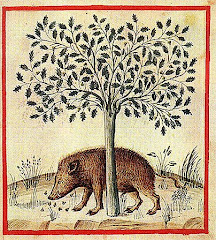India moves to protect traditional medicines from foreign patents
Apparently, following repeated efforts by multinational pharmaceutical companies to patent both medicinal plants and traditional medical treatments (around 5000 issued so far), India has decided to take a stand and has now placed around 200,000 treatments in the public domain so that they are free to use, but cannot be sold as a brand.
A database containing these treatments, which took 8 years to compile, will now be used as a reference by the European Patent Office so that India will no longer have to fork out millions of dollars to lift patents on plants and treatments which already had long traditions of use in India.
It seems lifting the patents on Turmeric (Curcuma longa) & Neem (Azadirachta indica) alone cost India $5billion whilst patenting such plants has the potential to dramatically reduce the 15 years and $15billion it usually takes a pharmaceutical company to produce a new drug.
In spite of highlighting the continued greed of Big Pharma this is wonderful news. Not just because such positive steps are finally being taken to protect traditional medical systems such as Ayurveda, Unani and Siddha, but also because it can leave even the staunchest sceptic in absolutely no doubt that these plants must have something to offer considering the kind of money involved.
A database containing these treatments, which took 8 years to compile, will now be used as a reference by the European Patent Office so that India will no longer have to fork out millions of dollars to lift patents on plants and treatments which already had long traditions of use in India.
It seems lifting the patents on Turmeric (Curcuma longa) & Neem (Azadirachta indica) alone cost India $5billion whilst patenting such plants has the potential to dramatically reduce the 15 years and $15billion it usually takes a pharmaceutical company to produce a new drug.
In spite of highlighting the continued greed of Big Pharma this is wonderful news. Not just because such positive steps are finally being taken to protect traditional medical systems such as Ayurveda, Unani and Siddha, but also because it can leave even the staunchest sceptic in absolutely no doubt that these plants must have something to offer considering the kind of money involved.






























